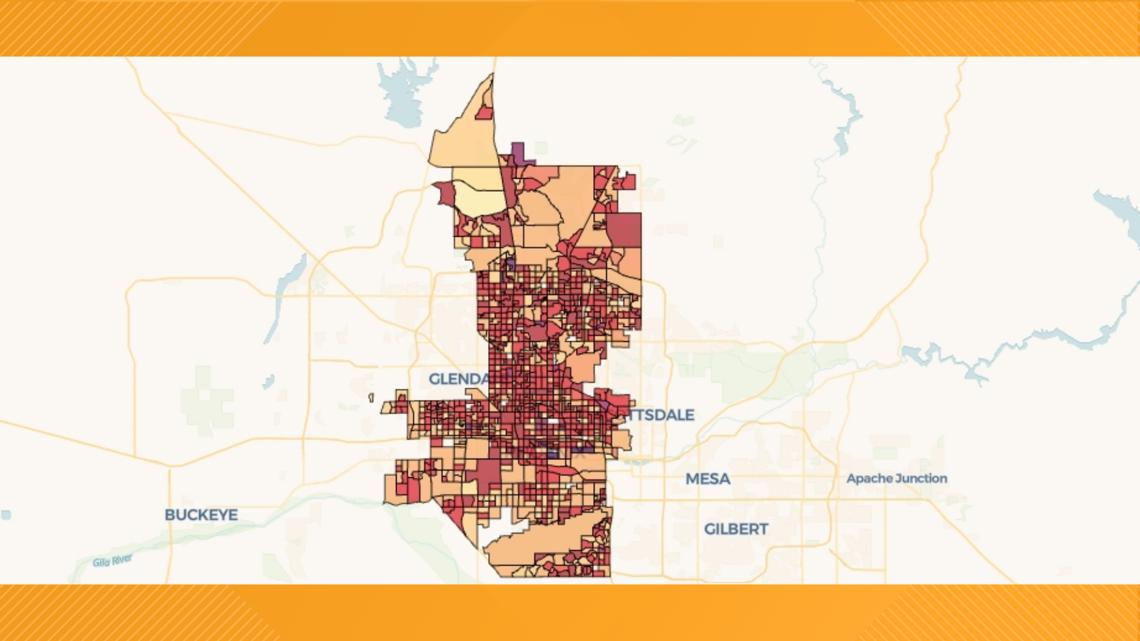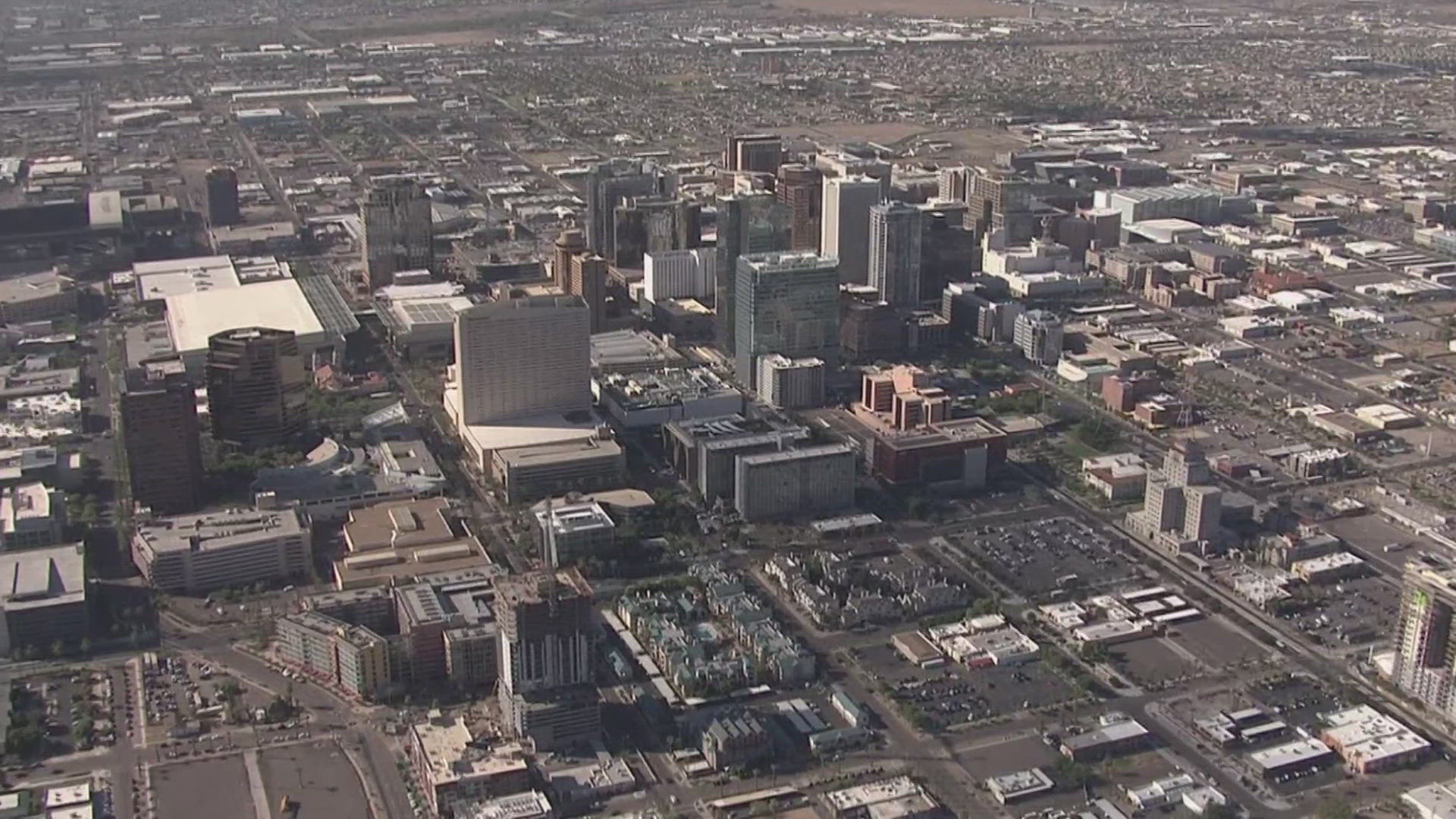PHOENIX — The "urban heat island" effect is making Phoenix feel several degrees hotter, a new data analysis shows.
Climate Central has recently examined 65 major cities throughout the U.S. and found Phoenix's built environment is retaining heat to make the city hotter, on average, by an additional seven degrees.
The clustering of buildings, concrete and asphalt can retain more heat and make it more difficult for residents in these urban locations to cool off.
"Phoenix has a really interesting pattern," said Jen Brady, senior data analyst with Climate Central. "And compared to a lot of other cities because of the way it has been developed, but it has the same impact as it would if it's all in an intense urban core."
Some of the neighborhoods with the highest "heat island intensity" are located in downtown Phoenix and near Phoenix Sky Harbor Airport, according to a map created by Climate Central.
Ariane Middel, an ASU professor who has studied urban heat islands, said Valley neighborhoods with more trees and vegetation tend to stay cooler.
"If you have neighborhoods such as South Phoenix, where you have lots of impervious surfaces and soil and dirt, those neighborhoods get really, really hot," Middel said.
Middel said creating more shade throughout the city can help since standing in a shady spot can reduce the heat load on a person's body by up to 30 degrees.
"If we bring in more vegetation that cools the urban environment," Middel said, "and then if we produce shade that cools people during the day, of course, trees require water, so that's a trade off, right?"


UP TO SPEED

